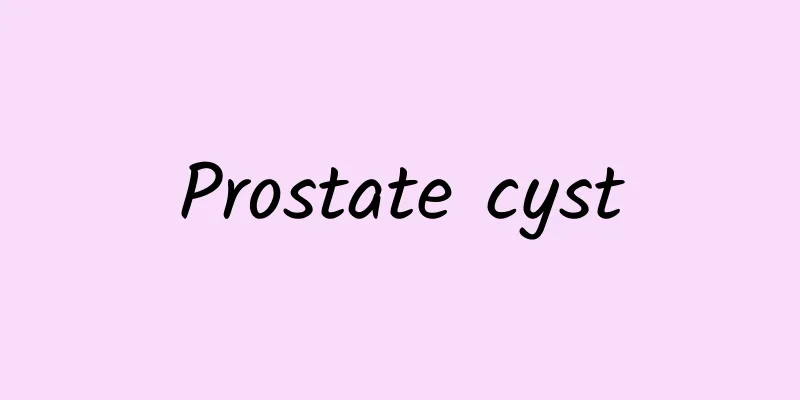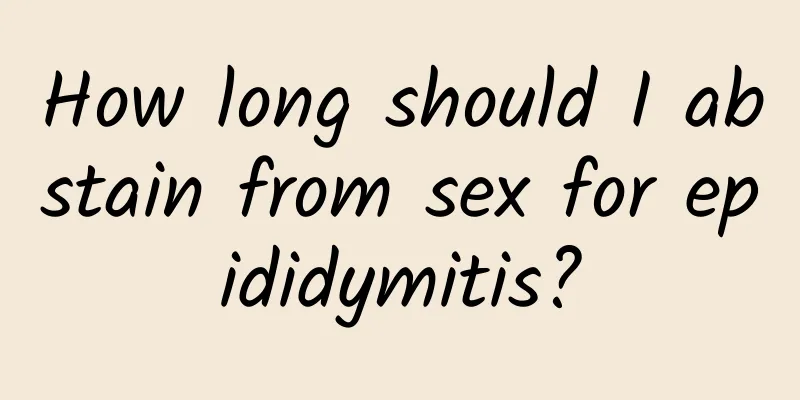Prostate cyst

|
Boys start to have prostate problems when they get older, around the age of 50 or 60. They can no longer hold their urine for long periods of time or sleep until dawn to urinate. They basically have to get up several times in the middle of the night, and they increasingly feel pressure when urinating. Be careful if you feel pressure from a tumor, as this may be a symptom of a prostate cyst. Symptoms and signs The patient's symptoms vary depending on the size of the cyst. Mild cases may be completely symptom-free, while severe cases may show urgency and frequency of urination, difficulty urinating, a thin urine stream, excessive residual urine and urinary retention. Hematuria is extremely rare. When the cyst is infected, purulent urine may occur. Medication Smaller cysts without symptoms can be observed during follow-up or aspirated via perineal or rectal puncture, but they are prone to infection and recurrence. Larger cysts can be removed via retropubic or perineal surgery. For cysts that protrude into the bladder, they can be removed via cystectomy or transurethral electroresection to remove most of the top of the cyst and allow it to drain adequately. Diet and Health The diet should be light, pay attention to hygiene, and balance the diet reasonably. Preventive care Early detection leads to early treatment. Pathological etiology Congenital prostatic cysts occur in the remnants of the mesonephric or paramesonephric duct systems, and the cyst wall is composed of fibromuscular tissue. Acquired cysts are mostly retention cysts due to incomplete obstruction of the prostatic alveoli. The alveolar epithelium becomes thinner, and the cyst wall is fibromuscular tissue covered by cuboidal epithelium. The cyst fluid is mucus and may contain sperm. Disease Diagnosis 1. Seminal vesicle cyst may present with symptoms such as frequent urination, urgency, and difficulty urinating. The cystic mass can be felt on the side of the prostate through rectal indication. The mass is single with smooth and intact edges. The cystic fluid may contain sperm. Retrograde puncture and angiography through the ipsilateral vas deferens or direct perineal puncture can show compression of the seminal vesicle, filling defect, and a round shadow of the cyst. 2. Hydatid cysts: Rectal diagnosis can touch the tumor in the prostate area. However, hydatid cysts rarely occur in the prostate. Most of them are between the bladder and rectum or in the bladder wall, and may adhere to the prostate. Eosinophils increase, and the intradermal test for hydatid antigen or complement binding test is positive. 3. Prostatic sinus (diverticulum) has similar manifestations to prostatic cysts. However, there are differences: symptoms appear early, in infants and adolescents; often combined with congenital abnormalities such as hypospadias, cryptorchidism and pseudohermaphroditism; urethrography can show communication with the posterior urethra, and fluid is often discharged from the urethral opening during transrectal massage, and it is easy to be infected. |
>>: What are the symptoms of kidney yang deficiency in men?
Recommend
What are the treatments for acute orchitis?
Acute orchitis threatens male reproductive health...
Is the ejaculate yellow and granular?
Men's semen can reflect their physical health...
Male urine bifurcation pattern
It is believed that in daily life, male friends w...
Is yellowish sperm normal?
Many men find that their sperm color is abnormal ...
Why is the glans peeling and red?
In real life, most men attach great importance to...
What to do if a boy has an itchy scrotum
Men are known as the strongest, but this does not...
Are male urinary tract infections serious?
Urinary tract infection is a common disease probl...
Male urethra anatomy
The male urethra is the urinary passage and the e...
What to do about men's skin aging
Men's skin is the same as women's skin. W...
Epididymis pictures
The epididymal cyst is a human organ composed of ...
Male Delayed Ejaculation Drugs
If men want to prolong the duration of sex, they ...
What is the reason for a circle of fleshy particles growing on the glans?
Many friends will ask me about some physical prob...
7 conjectures about the health deterioration of otakus
Psychologists and health scientists have some res...
Men have breast lumps because of this
Queen is not the exclusive right of every woman. ...
Is it OK for men to shave their private parts?
As we all know, no matter male or female, as long...









